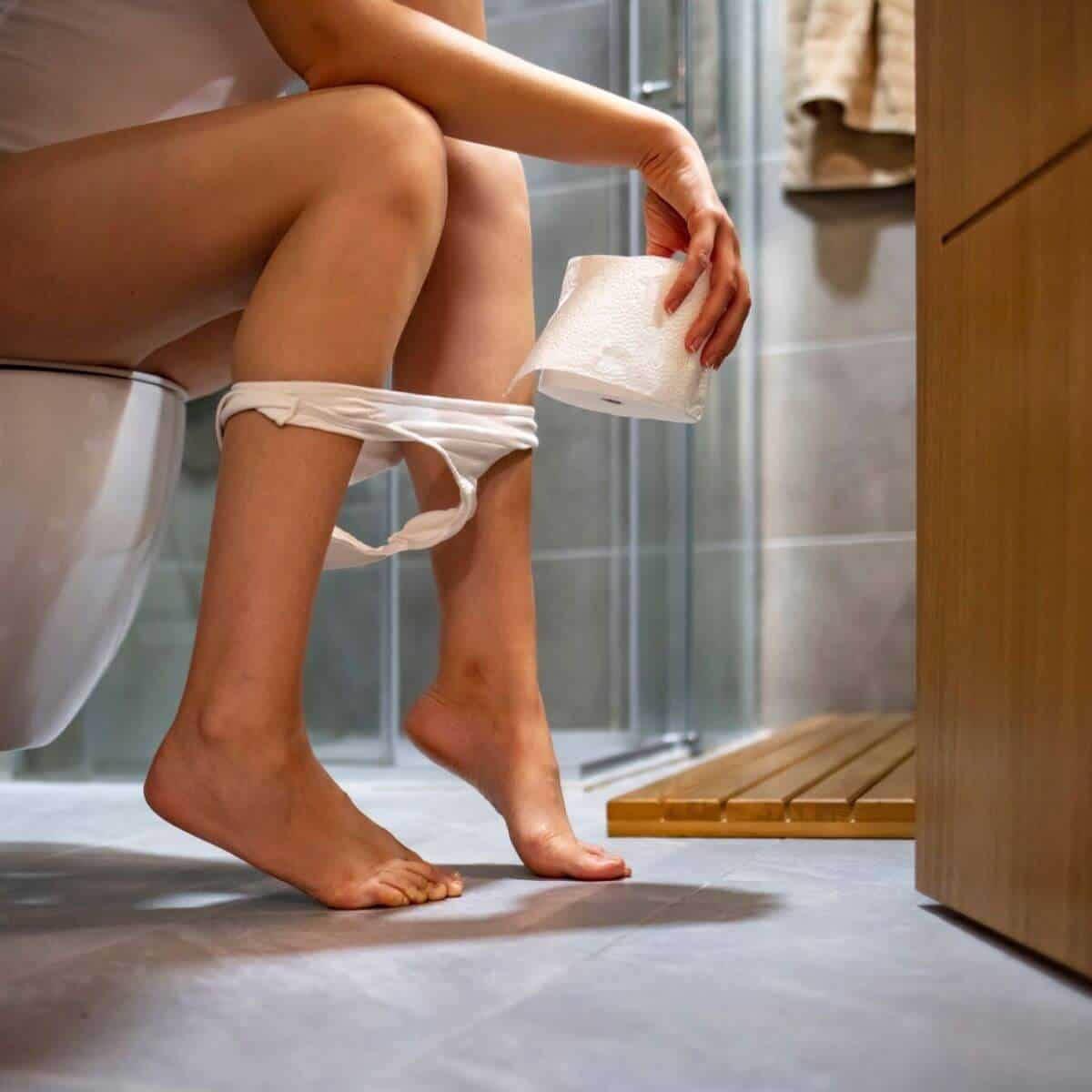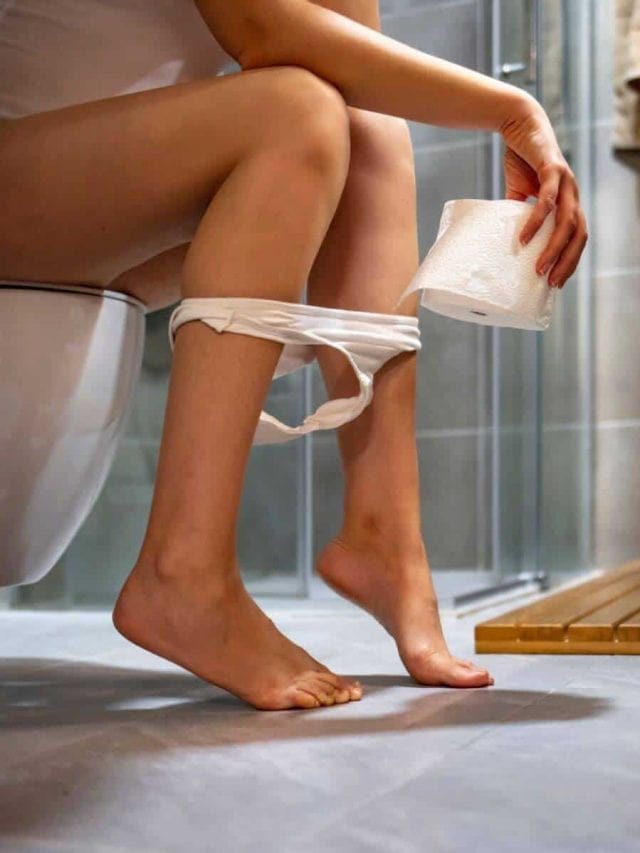So, you just spent hours figuring out when to go to the hospital for labor; you got there and birthed your beautiful baby; and now you’re postpartum!
Congrats, mama! You did a HUGE and amazing thing, and we’re SUPER proud of you.
When postpartum mamas finally get home with their tiny new bundle, most of them are very focused on their babies and what they are taking in through the breast or the bottle. With newborns, we’re also hyper aware of what’s coming OUT of those tiny bodies.
But what about YOUR body? It’s just been through the damn ringer, and when you’re not fretting over the baby, you’re likely concerned with what’s going on down there. Whether you delivered vaginally or by c-section, you might even be subconsciously freaking out about delivering your first postpartum poop.
Here’s the deal: you might have heard of some horror stories about the postpartum poop experience, but we’re here to tell you there is little to fear or get anxious about.
The tips below will help quell any concerns you may have with pooping postpartum!
And if you need some great products to help further tame your fears, we have a ton of great postpartum supplies recommendations, too!
In this article, we’ll give some exercise-based recommendations to practice before birth to help your first postpartum poop go as smoothly as possible. ALWAYS talk to your doctor about performing exercises while pregnant, and if you have been put on bedrest or modified bedrest, you should avoid the exercises mentioned here that require you to get out of bed. Take care of YOURSELF!

This site contains affiliate links, meaning that we earn a small commission for purchases made through our site. We only recommend products we personally use, love, or have thoroughly vetted.
Four Ways to Prepare for the Postpartum Poop While Pregnant
Many mamas don’t know that taming your fears about postpartum pooping actually begins before you give birth.
There are some great ways that you can get your body ready for when you experience postpartum constipation.

1. Give Yourself Perineal Massages
Doctors recommend that you start perineal massages after you have hit 35 weeks of pregnancy.
In fact, perineal massage before birth has been linked to LESS perineal pain after birth and a lower rate of episiotomy. What’s not to love about that?
And if you aren’t familiar with it (no worries!), the perineum is the tissue between your anus and vulva.
This image gives a good overview of where your perineum is. As you can see, it’s going to be directly affected during childbirth.
Perineal massages prepare your perineum for childbirth by getting your perineal muscles used to the process of stretching. You can correctly do perineal massages several times a day either by yourself or with a partner.
Here’s a full run-down of how to give yourself a perineal massage:
- Find a comfy place to sit and support your back. If your belly prevents you from seeing down there (and it probably will at 35 weeks!), grab a hand mirror.
- You’ll want to use your favorite lubricant, natural oil, or a water-soluble lubricant.
- Using two thumbs, massage in a U-shape motion along the wall of the vagina towards the anus. Hold this movement for one to two minutes at various points within the “U.”
- Repeat for a total of 4-5 minutes, and keep in mind that you might feel uncomfortable the first few times you do this. It will get better as the muscles in your perineum get used to the stretch.
2. Stay Toned With Deep Squats
Deep squats will help keep your muscles toned during pregnancy, and will also assist in preparing your body for childbirth by lowering the risk of tearing. Also, deep squats help lower the chance of postpartum incontinence.
To do a deep squat, place your feet shoulder width apart on the floor with your toes turned slightly outwards. From there, lower your body down to 90 degrees or lower (if possible).
Don’t do anything that doesn’t feel comfortable to you or that your health care provider hasn’t approved you for.
Then, bring your arms in front of you and rest your elbows on the inside of your thigh. Think of a sumo-wrestler and have a good belly laugh while you’re at it.
3. Practice Prenatal Child’s Pose
If you have ever done yoga in a studio or through an online virtual class, you should be familiar with child’s pose. There are even variations of this pose for pregnancy (scroll down to find child’s pose). Child’s pose will help stretch and lengthen your pelvic floor muscles.
Not only will child’s pose and other yoga positions help strengthen your pelvic muscles, but they can also help reduce anxiety. This common yoga pose is great self care for moms when you just need a moment to yourself. Bonus!
To do child’s pose, kneel on the floor on your mat or a carpeted area with your toes together. Your knees should be hip-width apart.
Then, lower your torso down between your knees and exhale. Your fingertips and hands should stretch in front of you as you focus on your breathing.

4. Do Kegels
According to the Mayo Clinic, developing a kegel practice before, during, and after pregnancy can help lower the chances of pelvic floor issues and postpartum incontinence.
Kegel exercises are very small, internal movements, so make sure to focus when you’re doing them.
To properly do a kegel movement, lie down on your back with your arms by your side or hands your belly.
Then, pretend you are wrapping your vaginal muscles around a tampon or another small object like a marble, all while contracting your pelvic muscles. Hold each kegel for three to five seconds at a time, and then relax your pelvic muscles for the same amount of time. You can do 10–15 repetitions and eventually work up to holding and relaxing for 10 seconds at a time.
How Birth Affects Bowel Movements: What You Need to Know
When delivering your baby, you might have some anxiety about your postpartum bowel movements, and we get it.
How is your body supposed to do normal stuff, like poop, after a small, human train has ripped through it?? Or, after an intense surgical procedure?!
It’s understandable to have those anxieties, but please know that a lot of your fears can be lessened by understanding how your body does a lot of the work FOR you before you give birth.
You’ll also want to understand how episiotomies and perineal tears can affect your ability to go to the bathroom after giving birth.
Take a deep breath and remember that you are biologically and physiologically prepared for this. And now you have knowledge on your side, too!

You might already be aware that you’ll likely poop during delivery (don’t worry; it’s normal, and your care team will have seen in before!), but did you know that many other things, like hormonal changes, can lead to sluggish bowels?
1. You’ll Have Looser Lower Body Muscles
During pregnancy, a hormone identified as “relaxin” will begin to work immediately. Relaxin increases the elasticity of your muscles, ligaments, and tissues.
This means that your pelvic floor will be nice and loose after birth, which will help with your first bowel movement. However, your pelvic floor has just been through A LOT, so keep that in mind.
With that said, try not to strain too much. You don’t want to push your body more than it can handle. Basically, be patient with yourself on the toilet and make sure you try and go whenever you have the urge!
2. You Might Have an Episiotomy or Perineal Tear After Vaginal Birth
An episiotomy is a surgical incision made in the perineum during childbirth to allow for the baby to pass through without painful tearing.
While the term normally has a very negative connotation, episiotomies, when medically necessary, can help with safe delivery.
To be fair, they were once practiced a bit too regularly, and they are often associated with painful sex after episiotomy, so make sure that you advocate for yourself while pregnant and know the risks and effects of the procedure should you need one.
Perineal Tears and the Postpartum Poop
Perineal tears are similar to episiotomies, but they are a naturally occurring postpartum complication. According to BMC Pregnancy and Childbirth, perineal tears affect nearly 8/10 women during childbirth.
If you experience a perineal tear or episiotomy, sutures or stitches will be required to help with the healing process.
If you’re having trouble wiping postpartum due to the stitches, consider a bidet. A bidet will help you wipe with a gentle stream of water instead of using toilet paper, which can aggravate the area and cause more pain.
Just be sure to turn your bidet to a low, gentle setting before using it.
Preparing for Your First Postpartum Poop
Okay, so now you know how to prepare for the postpartum poop when pregnant, and you know what will happen to your body while you’re giving birth. So what should you do after birth?

1. Keep Those Fluid Levels High
Childbirth can leave you dehydrated, which can lead to constipation.
To best prepare your body for your postpartum pooping experience (regardless of how you’ve delivered), you must replenish those lost fluids by drinking lots of water and electrolytes each day.
Try to consume 2–3 liters of water or high-electrolyte sports drinks each day. We love one packed of Liquid IV in 30 oz of water!
Drinking plenty of water will keep you hydrated for breastfeeding, too, if you and baby are going that feeding route.
2. Consume Healthy Snacks + Go for Gentle Walks
It’s possible that you’re looking at your postpartum body and wishing you were back to normal. First off, please pat yourself on the back and try not to be too hard on yourself. You’ve just done an AMAZING thing!
But if you want to treat your body right regardless of whether or not you’re trying to lose weight, an easy way to do that is to eat healthy food and go for gentle walks (if you’re cleared to do so).
From a pooping point of view, your stomach craves fiber! So start eating high-fiber foods such as lentils, beans, berries, and even popcorn.
Drinking water, consuming high-fiber foods, and going for a gentle walk is a great combo for getting that postpartum poop on deck.
3. Pamper That Perineum
After a vaginal birth, your perineum will likely be sore, regardless if you experienced a perineal tear or episiotomy.
If you’re experiencing soreness, take sitz baths and avoid sitting on hard surfaces. If you are sitting down a lot, try using a donut cushion and purchase a super comfy pair of the best postpartum pajamas.
One thing you shouldn’t do after birth, though, is ignore the urge. Try sitting on the toilet whenever you feel the urge. This can be hard to do with a newborn around, but hand the baby over to a partner or support person when you feel the urge.
Another option to help with perineal soreness is using padsicles (pad + popsicle). Padsicles are a recent postpartum discovery.
To create padsicles, smother a maxi pad with substances like aloe vera, witch hazel, or essential oils. You can also spray with Dermoplast. Once done, place them in a freezer until you need them.
Want all this stuff in one easy-to-find place? Grab Bodily’s amazing Care for Birth Box!
Pro Postpartum Poop Tip: prepare these padsicles in bulk since you’ll want to change them out when they start to dethaw.
4. Consider Using a Stool Softener
Many women use stool softeners during pregnancy to help with constipation.
But even if you don’t suffer from pregnancy constipation, you might want to start taking a stool softener a week or so before your due date, and especially after birth, to help with that first postpartum poop.
Stool softeners are great for helping you poop after either a vaginal birth OR a c-section, and great news: stool softeners such as Colace are generally considered to be safe during pregnancy and while breastfeeding.
Need a medically reviewed source to back up this claim? The Mayo Clinic has you covered.
You’ve Got this, Mama! We Wish You Well With that First Postpartum Poop!
Being pregnant and delivering a baby is no small feat.
You’re most likely going to experience all sorts of emotions, one of which is likely anxiety. But you you don’t have to be anxious about your first postpartum poop.
Follow the guide above to help take care of yourself and your perineum. For more postpartum pooping tips, visit TUSHY. Also, if you’re having difficulty pooping consider purchasing an ottoman stool to help!
If you’ve already given birth, what postpartum pooping tips are we missing? Tell us in the comments!










